The journey to the BJJ Worlds Master
By Leonardo Correa
May 14, 2020 - (11 min read)
The IBJJF Worlds Master is the highest level you can find those days. It requires special preparation if you want to perform at your best. In this post, I’ll write in detail about the journey to compete at the worlds 2019. I competed in the medium-heavy purple master 2 (also open weight) and return with two silver medals 🥈🥈. I hope this article is useful for people competing at a high level as well as those who are just looking at getting better at jiu-jitsu in general.
At the beginning of each year, I set a goal to compete at the Worlds master. Unfortunately, life gets in the way and I had to postpone for two years, 2017 and 2018. The first year my son was 1 year and a half, the second year we moved house. I wasn’t in a good mindset to compete. Actually, I took three months break in late 2018. Despite the challenges, I always trained and prepared for the worlds since I received my purple belt in Jan/2017 but I committed to the worlds in March 2019. I entered local competitions in the adult division. I never expected to win these tournaments. I intended to participate in high-level competitions. I live in Melbourne, Australia and I am 38 years old.
If you do the same as everybody else, you’ll be just like them. Do more but more efficiently. Success is routine. Anyone can do it. - Leo Correa
Now I am going to breakdown the preparation into sections.
Specific training
I spend a lot of time thinking of jiu-jitsu and trying to figure out the most effective ways to train. I like to improve the quality of my training sessions. Using previous experience in other sports such as soccer, I tailored every training session specific to my goals. I walk to the mat knowing the kind of positions I would like to use during sparring and stick with them. I obviously practice the positions our instructor shows us but I have my plan too.
I arrive about one hour before the class, practice moves in my gameplan. Sometimes I stay after class practicing a bit more.
I make my sessions specific without telling my training partners. Here are some examples (I still do most of these things):
- Pass lower belt guards to my “wrong” side so I get used to changing sides during the pass.
- I am not allowed to submit any lower belt. This forces me to train transitions from everywhere as well as train mobility.
- I am not allowed to sweep and submit. This makes my guard retention better
- Lock a triangle but not squeeze. Let people stack and throw you everywhere. I did this for 3 months or more. Started with white belts, then moved to blue. By the time I started to do triangle on purple, I had hours in that position and could predict many reactions.
No matter what my opponent does, I am focused on my own goals and determined to stick with them. I usually do 80% of my sparring sessions with lower belts so I can execute my gameplan more often before I take it to people at my level. I find the sparring session with higher belts don’t flow very well and this is not good for either of us.
Free sparring is only good to make you tough. Specific training sessions are the secret to improve fast in my opinion. You still need free sparring to apply techniques together.
In soccer, how much time do we spend playing full pitch matches? Probably 10% or less. I used to do at least 300 passes, short and long ranges in one training session in soccer. I definitely brought this concept across to BJJ.
Food
I eat well most of the time. Let’s say I eat well 85%. Something non-negotiable is my green raw juice in the morning. I am going to write a post about this but in summary, I drink daily: spinach, broccoli, ginger, turmeric, chia seeds, sesame seeds, flax seeds, beetroot, kale, and so forth. I have been doing this for 8 years. The raw food diet with good quality meat seems to be the most beneficial in my case.
Physical preparation
I didn’t want to replace one BJJ session with weights training. I don’t like weights. I ride a bicycle to work 4 times a week — about 80km per week. The essential training in my case (guard player) is the grip. See below.
Grip training
This is the most important training for guard players. I did 9 fights at the worlds, I lost my cardio in some fights but never lost my grips. I was able to make a grip and retain my guard even when I was so tired to the point of seeing everything spinning. I did pull-ups with and without the GI, wrap the GI in a foam roller and hold a choke for 20 or 30 seconds. I like grip training because you can do it in 15–25 minutes. I usually do immediately before the 2 hours training session (including one-hour sparring).
Gameplan
I spent hours thinking about a plan. I wrote down all positions I knew. Then I narrowed it down to the ones I could do well. I ended up with a primary guard (plan A), secondary guard (plan B), one sweep from each guard, two submissions from the guard, two ways to pass the guard, one sub from the back and mount, two takedowns. At the world's level, you have no time to think. If you stop to think, you are falling behind. I put my gameplan in a flowchart graph and practiced for hours. I was able to execute moves automatically during the matches. Gameplan and strategy are essential. You must know what you are going to do during the competition and practice that religiously before.
Here is my gameplan (https://bjjnerd.vercel.app/):
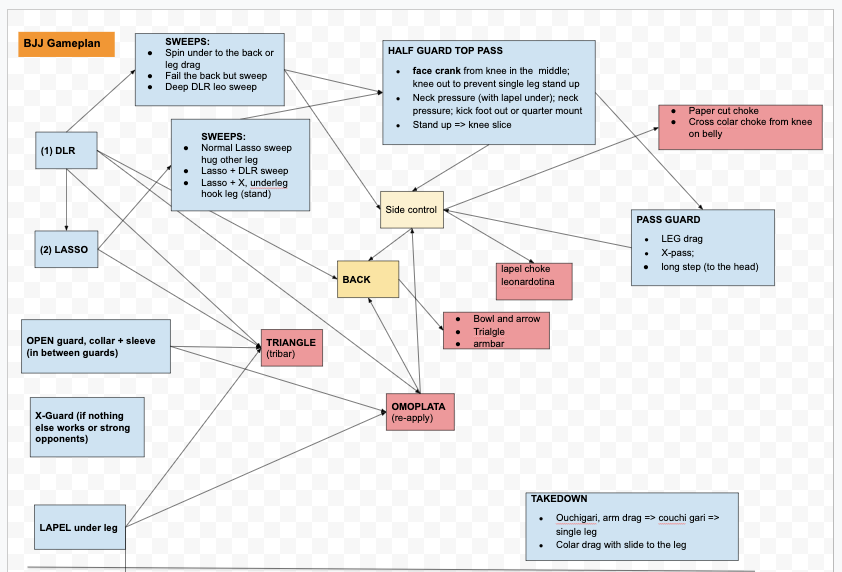 BJJ gameplan, Worlds master 2019, built with https://bjjnerd.vercel.app/
BJJ gameplan, Worlds master 2019, built with https://bjjnerd.vercel.app/
Note: Image above represents my competition gameplan. This is a permanent “work in progress” and you should always practice as many positions as you can, as well as having an open mind to learn new techniques and improve the ones you already know.
Strategy
My strategy since I first competed has been to score first. I usually pull guard. It can be an advantage or a sweep. Being ahead in points gives me a mental advantage to control the match. It forces my opponent to take risks so I can capitalize on situations to score further or get the submission.
Statistics proves that about 70% of competitors who score first have their hands raised at the end of the match.
Drills or sparring?
Short answer: both. I recommend “live drilling” with lower belts. As I said in the specific training session above if you want to get better at back control, how often are you going to take the back of someone at your level? Once you are in the back, how long can you stay there? For example, when you can take the back of lower belts pretty quick and stay there for 4 or 5 minutes. This way you are just training back control. I know it is tempting to submit them but don’t do it. This will force you to learn control and they learn to escape.
How often I trained
I trained BJJ about 6–10 hours a week, including drill sessions I organized with friends. My training schedule: 2 hours on Tuesdays (1-hour competition class), 2 hours on Saturdays (1-hour competition class), Thursdays or Wednesdays 1 hour, and Friday mornings 1 hour. Besides, I did 1-hour drills before Tuesday classes, occasionally 2 hours of repetition on Sundays. I also did grip training and pull-ups when I took my son to the playground.
When I was not training, I was always thinking of ways to adjust positions and improve my gameplan.
Cut weight or not?
I usually weigh around 82.5–84kg. I could’ve tried to cut to middleweight but decided to stay medium-heavy for the worlds. I was committed to figure out my BJJ identity, narrow down positions, improve and adjust them. I couldn’t focus on cutting weight at all. My official weight on the day was 84kg with the GI. The division goes up to 88.5kg. Next time I’ll try to cut to middleweight for Master 2 brown belt.
Mind preparation
This can be different depending on each individual. If I train and prepare well I don’t get nervous. I practiced my game plan so many times that I felt like I was just executing the moves during the competition. I arrived in Vegas on Tuesday 20th August 2019 and competed on Saturday 24th. Every day I visualized my gameplan. I couldn’t think about anything else. I have to admit I was anxious for the first fight. I put a lot of effort into this and I didn’t want things to end in 5 minutes.
The marginal gains
Here are my 100ish things I improved by 1 percent.
That green and yellow belt
This probably won’t make sense to anyone but for me, it was something very important. I prepared so much and I strongly think that any little thing can give you an edge at this level. I compete with a white gi. I always go to the right side of the table — the referee’s left side. What difference does this make? Well, if my opponent is also wearing a white gi, he has to wear the extra green and yellow belt. That way it's guaranteed that I never need to wear an extra belt. You're still wondering wtf? We have to re-tie the belt multiple times during a fight. As I have only one belt, I can use those extra seconds to breathe and think of my strategy for the rest of the fight, also save my grip and energy. Does this really make any difference? For me it does, It’s also about cognitive loading — less to worry about. I don’t expect many people to agree but it worked for me, especially at times when I was so tired in the middle of the fight.
Water with salt
In between matches, I drink water with salt. It helps with the hydration. I usually carry my himalayan salt in my gym bag. I do the same for the competition classes but only drink before and after the session. The celtic salt is also great.
Be prepared to change strategy
I usually get one sleeve grip to pull guard safely. However, sometimes you need to change your style according to your opponent. Before the quarter-final match, my team-mates warned me about my opponent sweeping everyone on single-leg-x guard. With this information, I didn’t want to be two points behind trying to pass a guard. I decided to pull guard immediately with almost no grips. This way I avoided his strongest game and I was so confident I could sweep anyone with my Lasso or DRL guards. I ended up getting a triangle very early in that match. Remember I have done hundreds of triangles during my preparation.
Second open weight fight, my opponent pulled guard immediately. I had to switch my mind to a passing mode, that wasn’t my “plan A” at all.
Summary
Find 100 things you can improve by 1 percent. - Book "Legacy", by James Kerr.
I finished second place 🥈 in the purple medium-heavy (6 fights) and second 🥈again in open weight division (3 fights), all in one day.
Regardless of the result, the preparation makes you better.
If you do what everybody else is doing, you are likely to become just like them: one more in the crowd. If you want to be the best, you must do more than everybody else, preferably train smarter, not harder.
You can watch all my fights here at Flograppling (you need an account): https://www.flograppling.com/search?q=leonardo%20correa%2C%202019&page=1&limit=10
I felt like all my competitors had strong jiu-jitsu skills to win the tournament. There are no easy fights out there.
Thank you for reading. Thanks to my partner Larissa to support this crazy plan, thanks to Daffa, Z, Henrique, Guilherme, and Lane for countless hours of extra training, thanks to team-mates at ASBJJ, thanks to coach Alex Santos.
Please leave a comment with your experience and tips for the competition. I am always open to learning. I didn’t get the gold so I am surely going back to the Worlds in the future.
Here are some pictures:
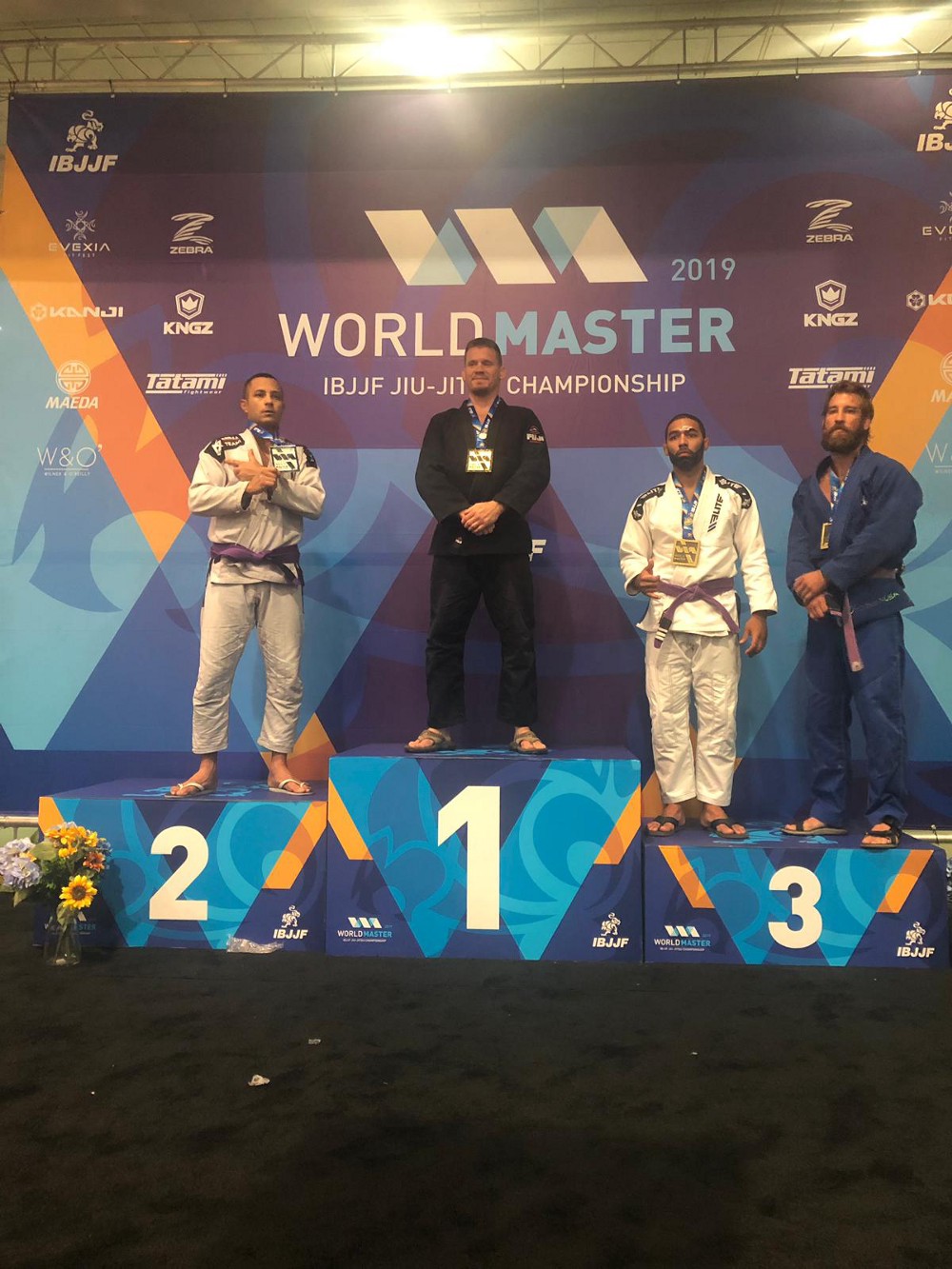 Podium, Second place, medium-heavy, IBJJF Worlds 2019 Purple Master 2
Podium, Second place, medium-heavy, IBJJF Worlds 2019 Purple Master 2
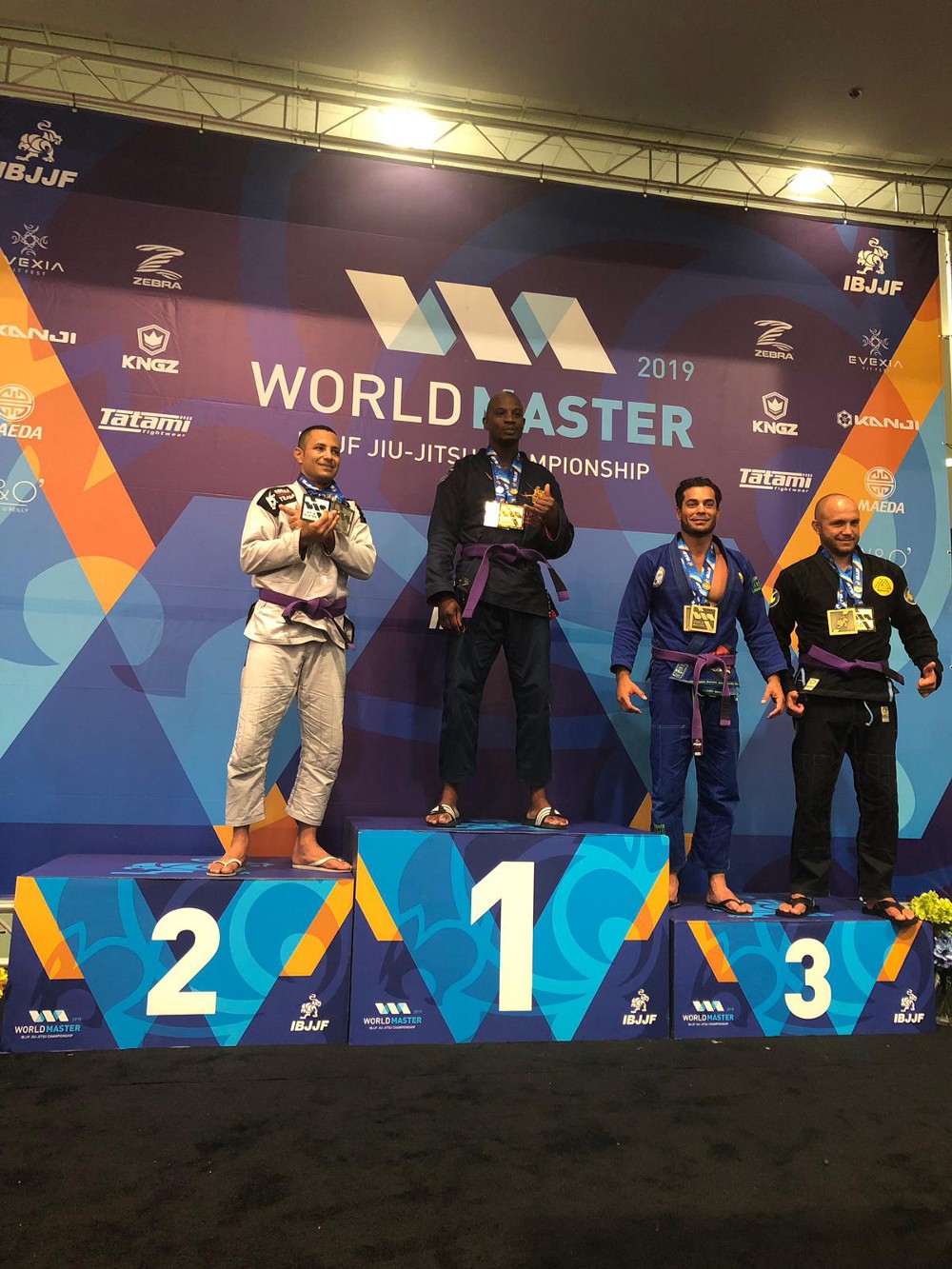 Podium, Second place, Open weight, IBJJF Worlds 2019 Purple Master 2
Podium, Second place, Open weight, IBJJF Worlds 2019 Purple Master 2
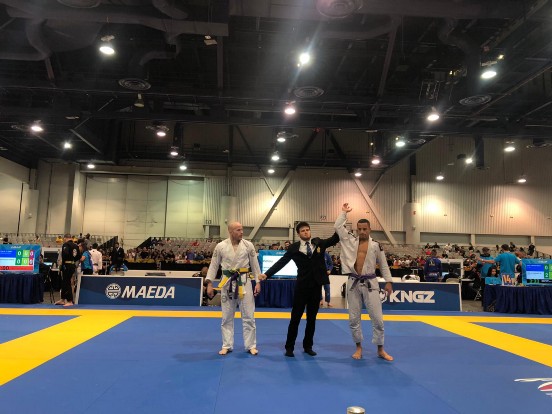 Round of 64 (first fight, I got no bye), medium-heavy, IBJJF Worlds 2019 Purple Master 2
Round of 64 (first fight, I got no bye), medium-heavy, IBJJF Worlds 2019 Purple Master 2
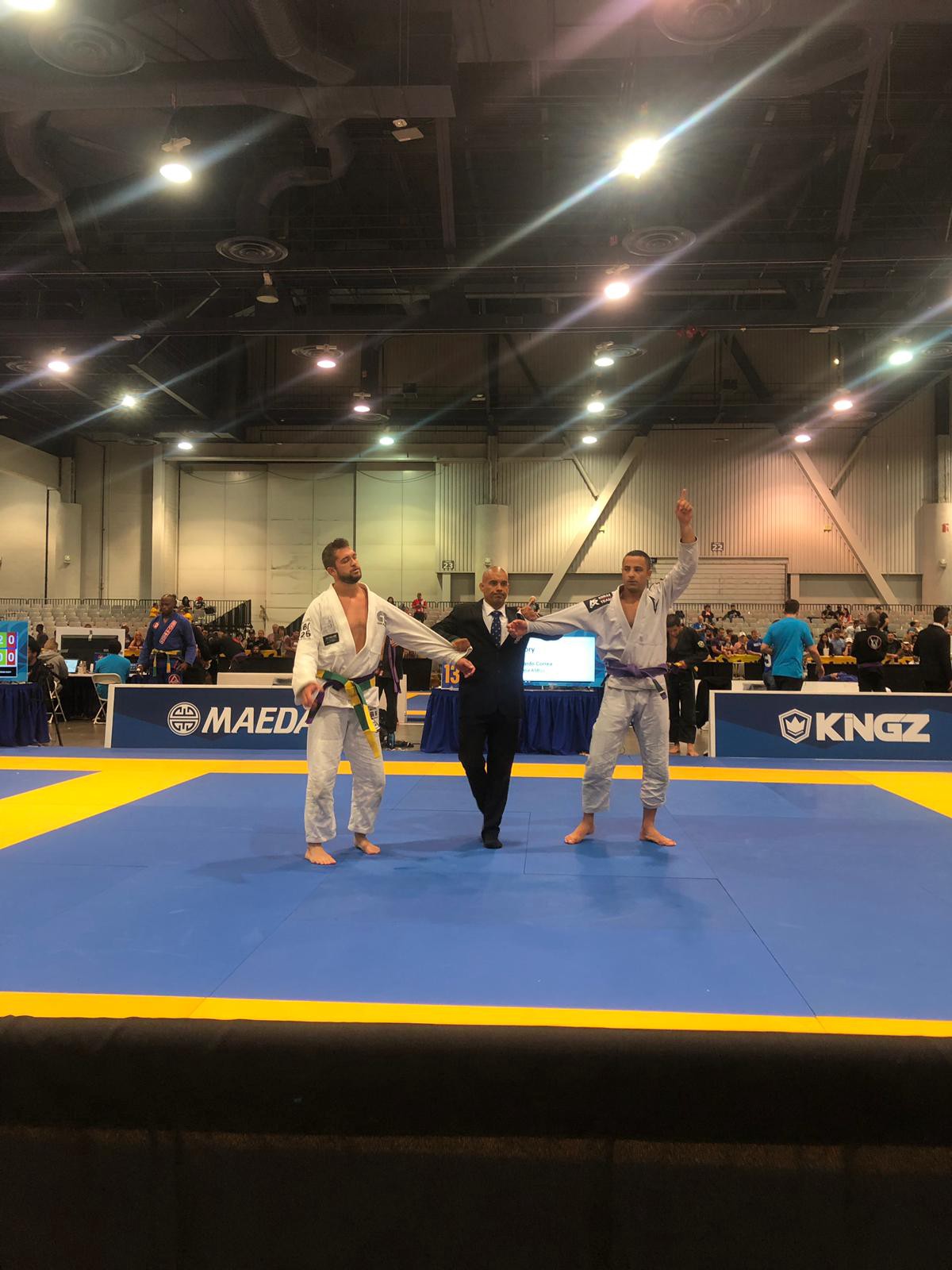 Round of 32, medium-heavy, IBJJF Worlds 2019 Purple Master 2
Round of 32, medium-heavy, IBJJF Worlds 2019 Purple Master 2
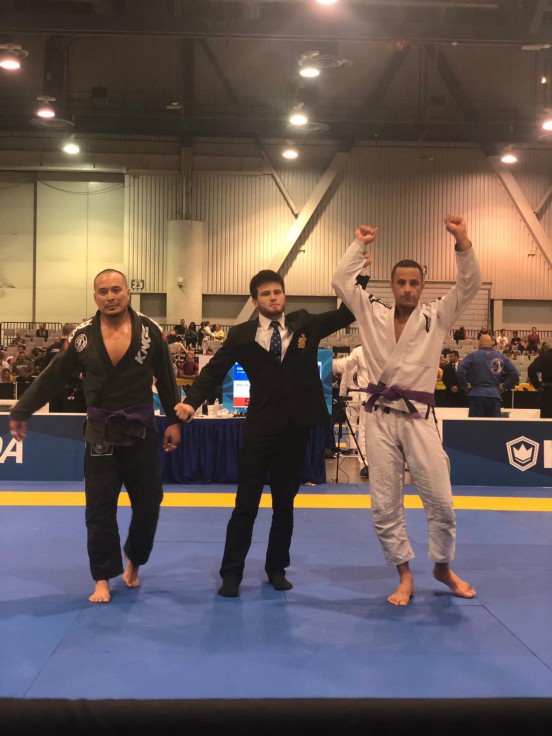 Round of 16, medium-heavy, IBJJF Worlds 2019 Purple Master 2
Round of 16, medium-heavy, IBJJF Worlds 2019 Purple Master 2
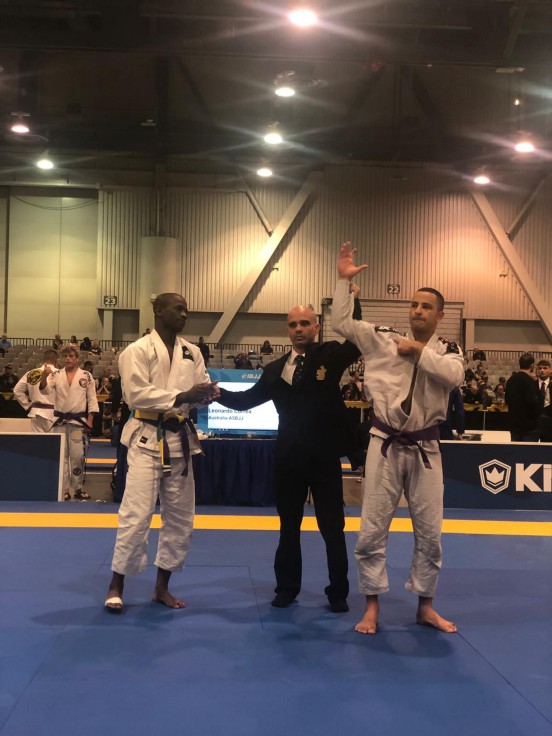 Quarter-final, medium-heavy, IBJJF Worlds 2019 Purple Master 2
Quarter-final, medium-heavy, IBJJF Worlds 2019 Purple Master 2
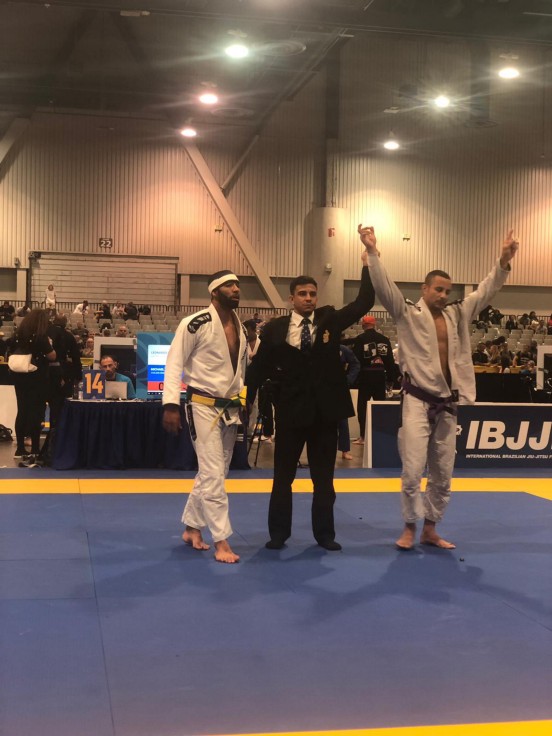 Semi-final, medium-heavy, IBJJF Worlds 2019 Purple Master 2
Semi-final, medium-heavy, IBJJF Worlds 2019 Purple Master 2
 Quarter-final, absolute, IBJJF Worlds 2019 Purple Master 2
Quarter-final, absolute, IBJJF Worlds 2019 Purple Master 2
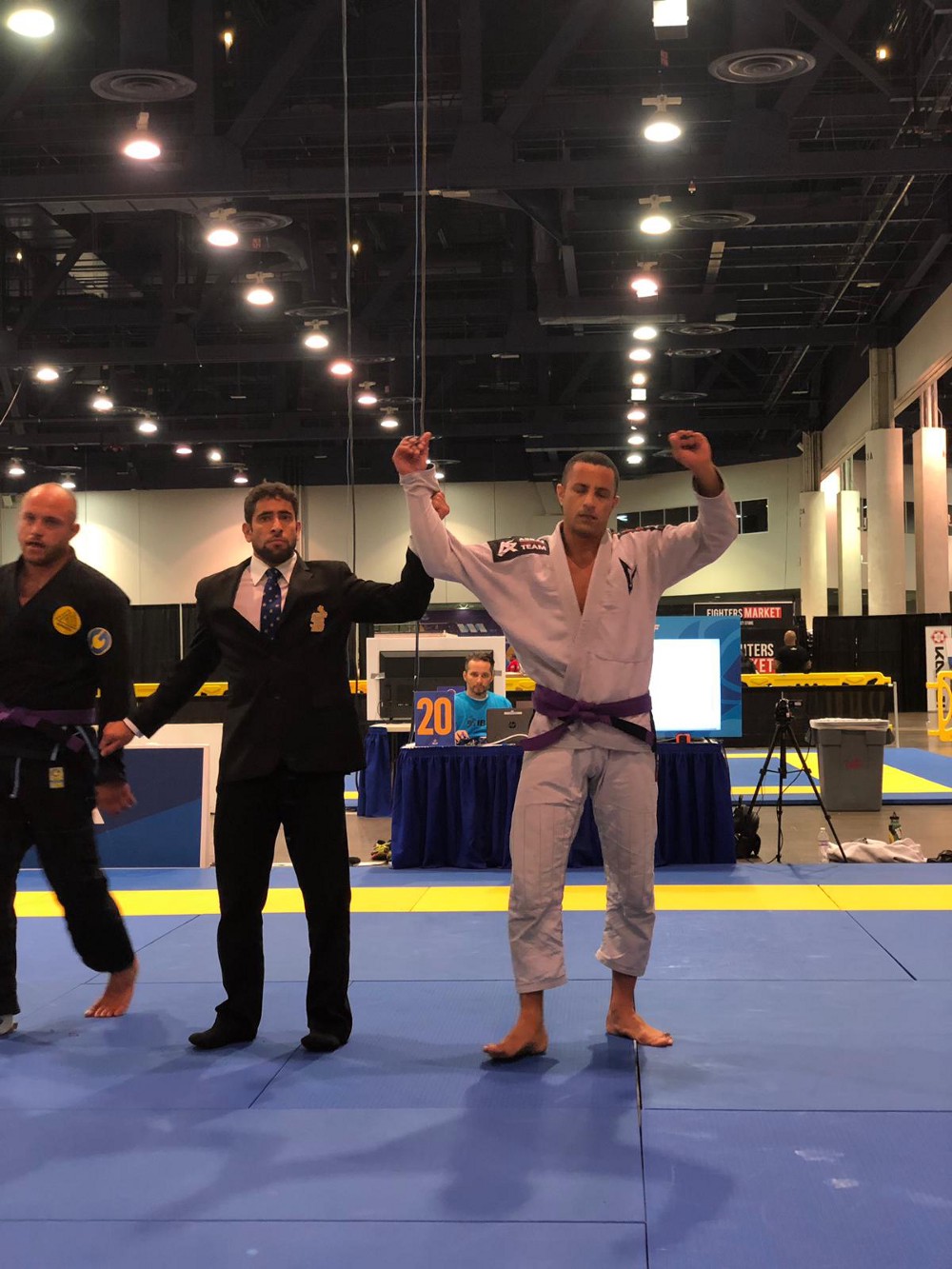 Semi-final, absolute, IBJJF Worlds 2019 Purple Master 2
Semi-final, absolute, IBJJF Worlds 2019 Purple Master 2
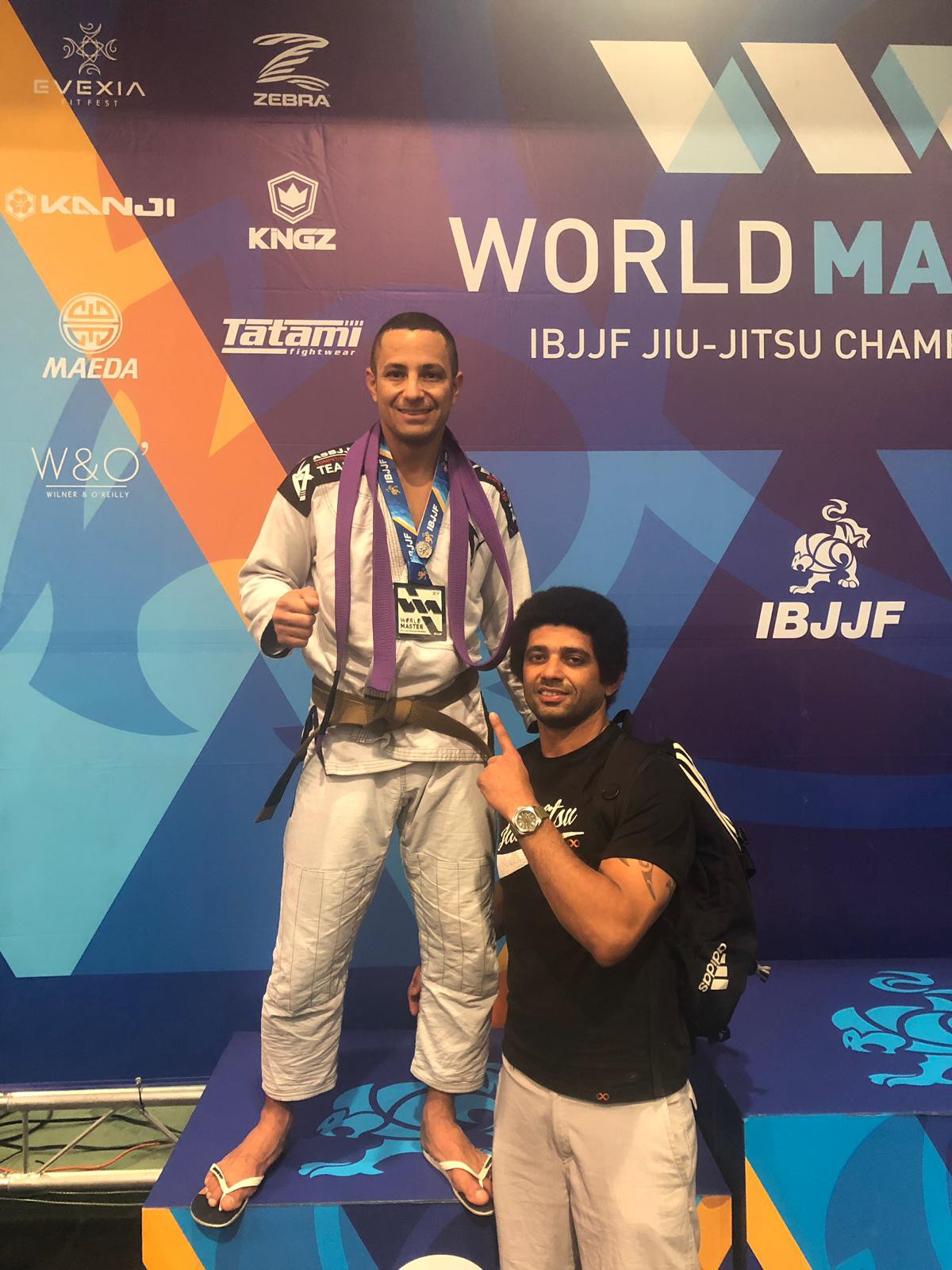 Me and my instructor Alex Santos, ASBJJ Melbourne Australia
Me and my instructor Alex Santos, ASBJJ Melbourne Australia
Tweet to @LeonardoBrAu